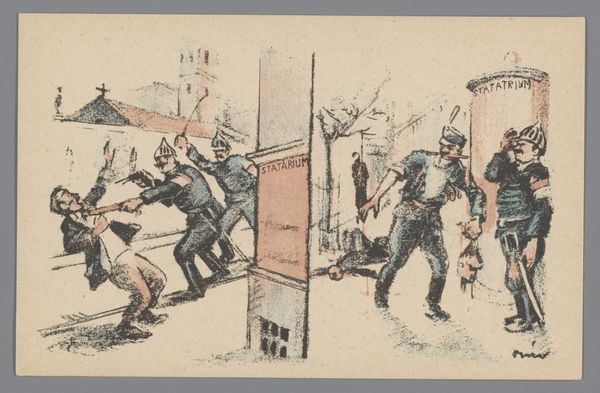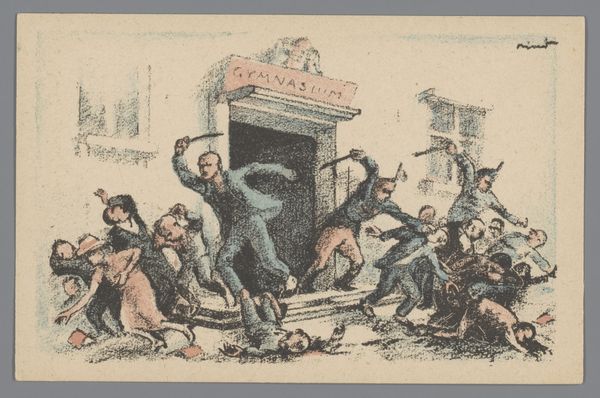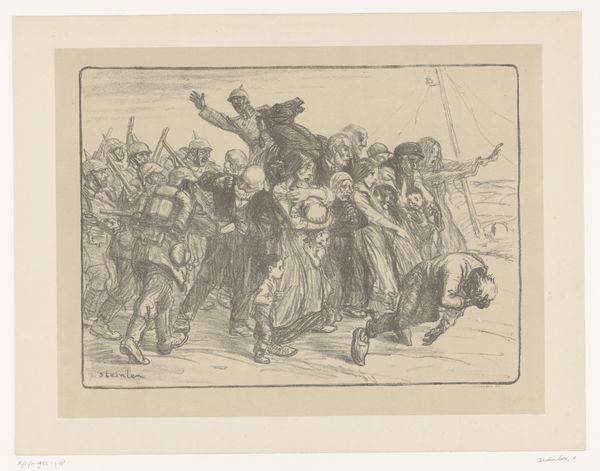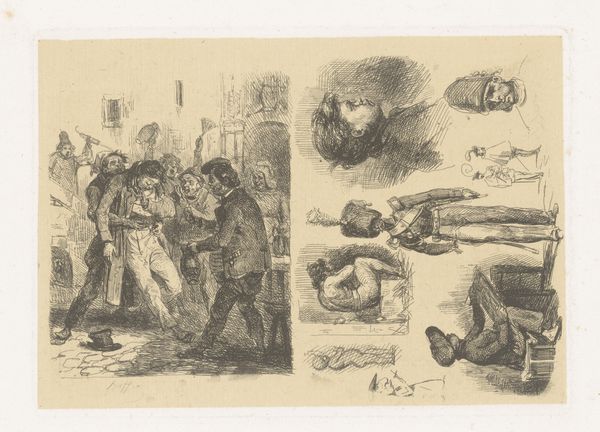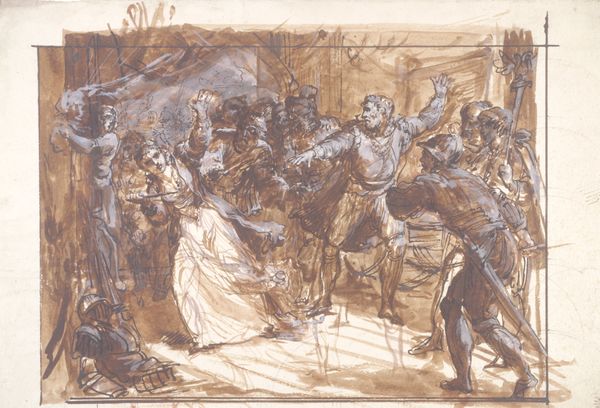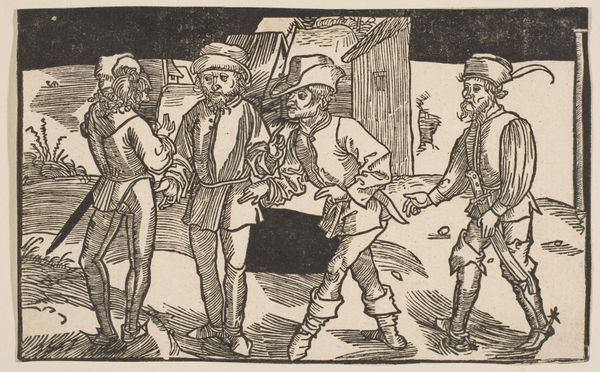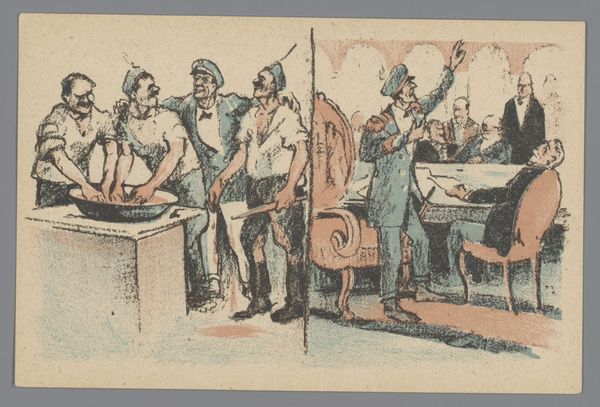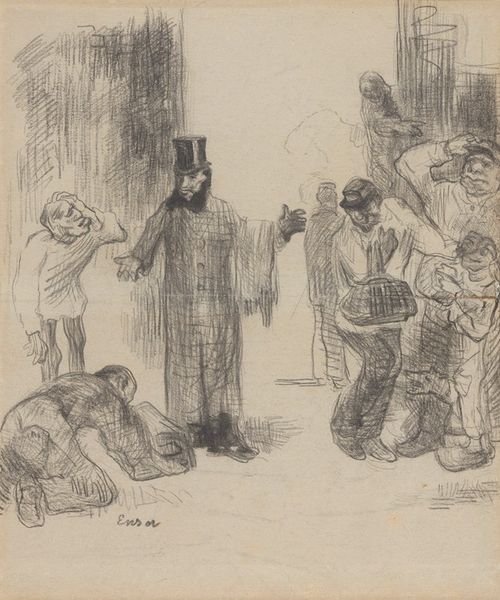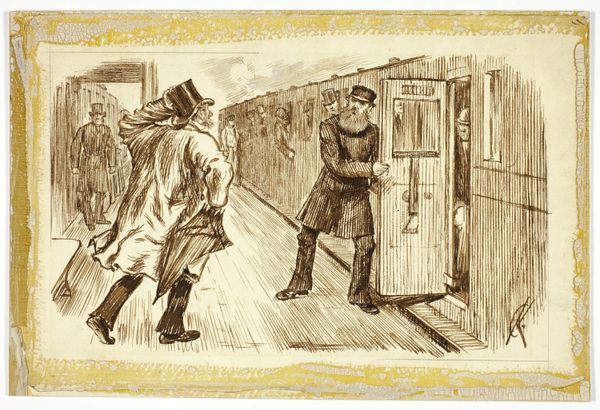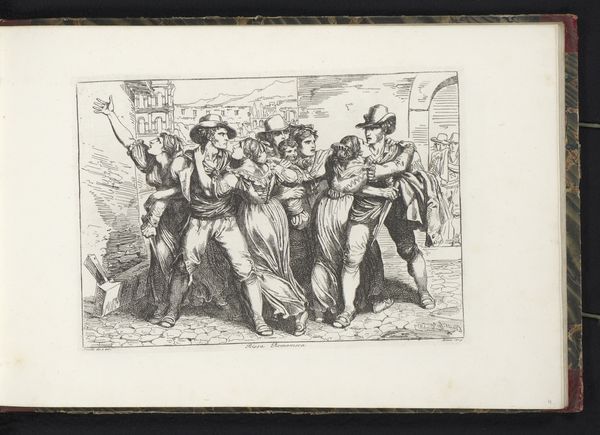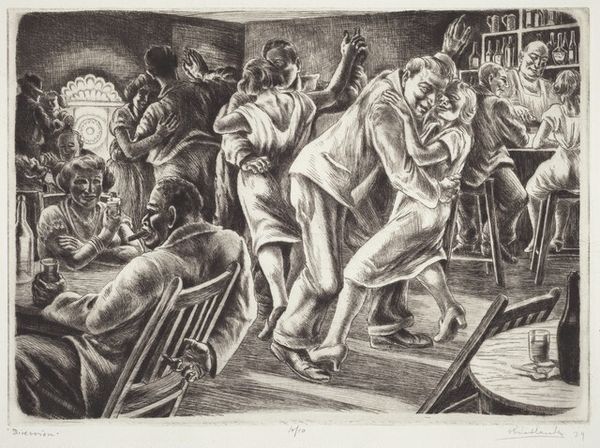
Naakte oude man aan een deur gespijkerd door soldaten die zijn familie dwingen te kijken 1920
0:00
0:00
mihalybiro
Rijksmuseum
drawing, paper, ink, pen
#
drawing
#
narrative-art
#
figuration
#
paper
#
ink
#
expressionism
#
pen
#
history-painting
#
erotic-art
Dimensions: height 90 mm, width 142 mm
Copyright: Rijks Museum: Open Domain
Editor: This is "Naakte oude man aan een deur gespijkerd door soldaten die zijn familie dwingen te kijken", a pen and ink drawing on paper by Mihály Biró, made around 1920. It's quite a harrowing scene. The forced observation, the graphic violence... How do you see this work functioning as a historical document, so to speak? Curator: Well, the horror you’re sensing is quite deliberate. As a history painting rendered in an Expressionist style, this work reflects the socio-political upheavals after World War I. The raw lines and disturbing imagery don’t just depict violence; they critique institutional power. Biró forces us to confront the human cost of conflict and oppression, a recurring theme during that interwar period, don't you think? Editor: Absolutely. So, beyond documenting the violence, do you think it is making a comment about the function of imagery and public memory at the time? Curator: Precisely. Consider who is commissioning and viewing such work. Is this for private contemplation or public denouncement? And what role do museums, like the Rijksmuseum where it’s now held, play in shaping its meaning and our access to this difficult narrative? How does its display today impact the reception of the scene depicted? Editor: It makes you wonder if the Rijksmuseum is amplifying a historical perspective that was silenced at the time. Curator: Exactly! It's a powerful, albeit painful, statement. Museums inadvertently give new voice or recontextualize forgotten ones. That is what fascinates me about Expressionism and its complex entanglement with history. The visceral, disturbing imagery serves to highlight political struggles and personal trauma of the 20th century in a very stark and poignant manner. It is impossible to miss the public role this art sought to fulfill. Editor: It definitely gives me a lot to consider about whose stories we choose to remember and how we remember them through art. Thanks for your insight! Curator: My pleasure! Always glad to examine how institutions shape what we see and understand about the past through art.
Comments
No comments
Be the first to comment and join the conversation on the ultimate creative platform.

